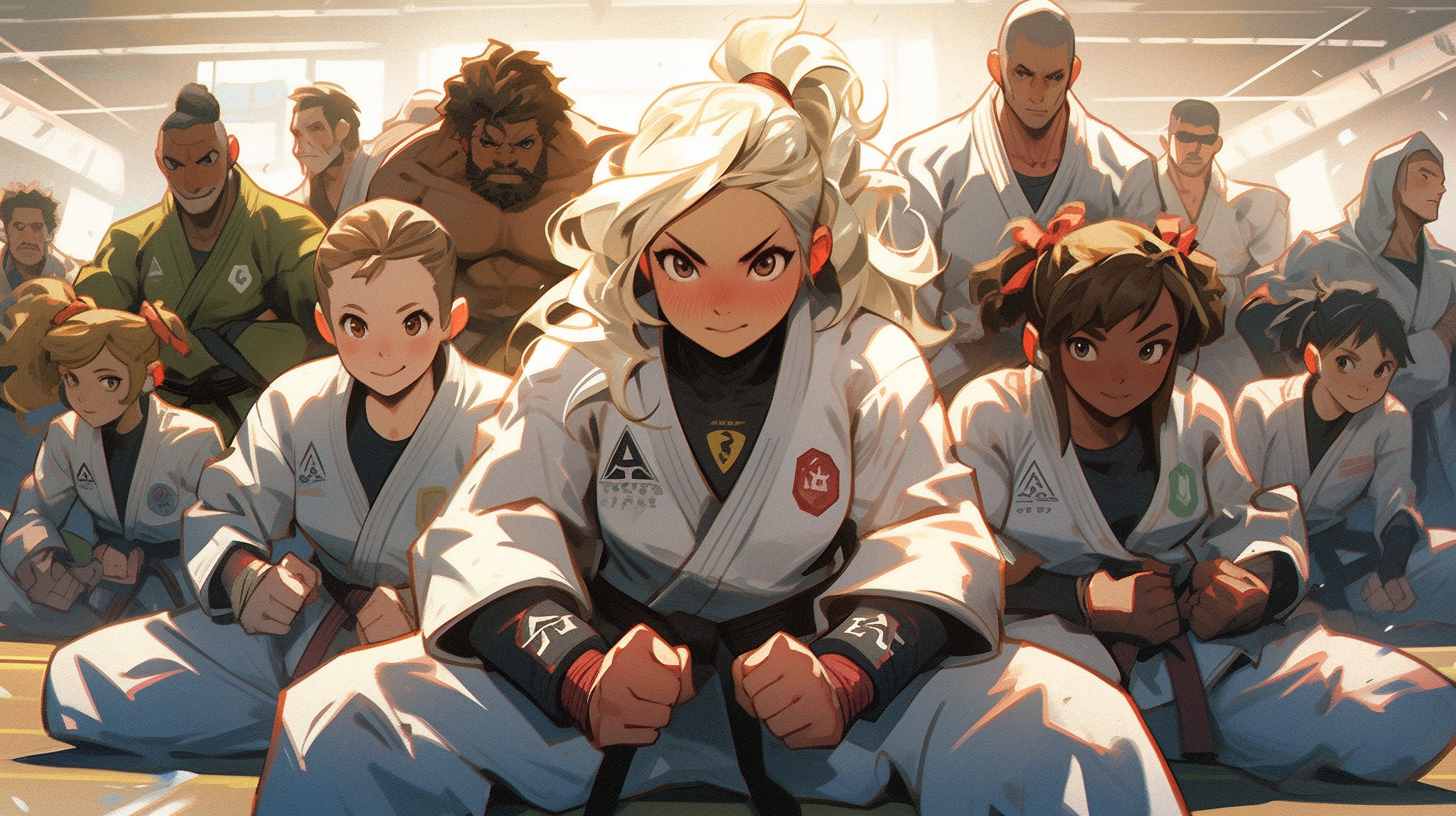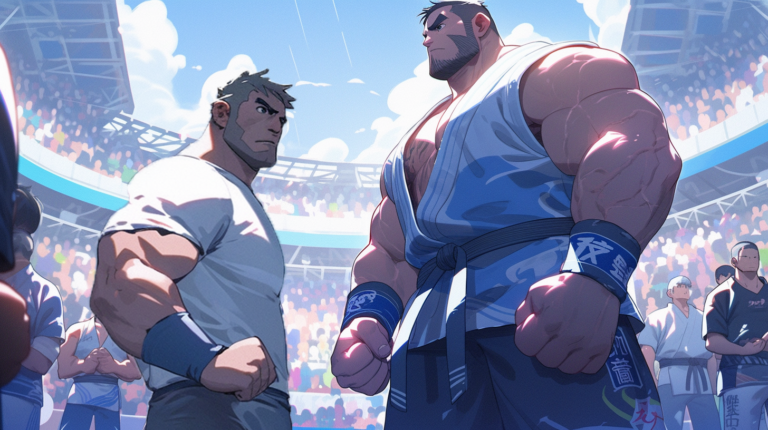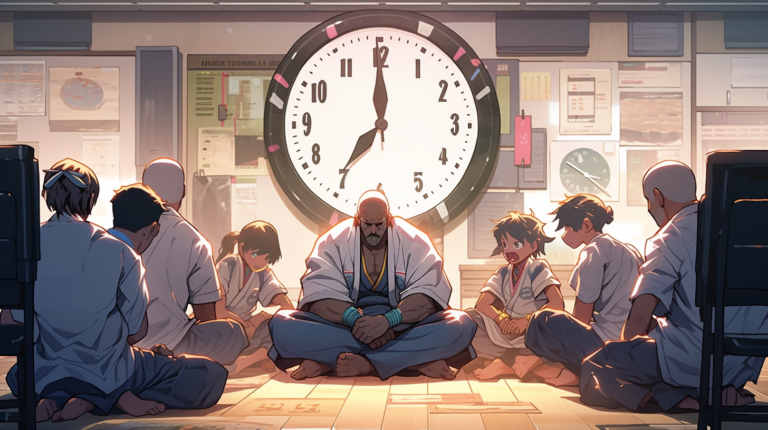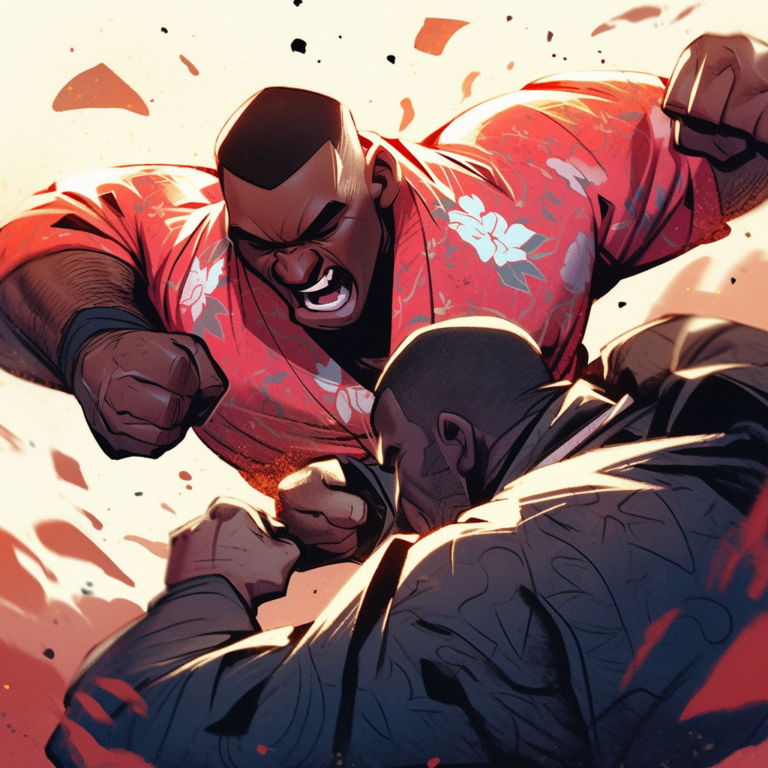jiu jitsu for beginners
Key Takeaways:
- Finding the right BJJ gym is crucial for beginners. Use Google Maps or Apple Maps to find a BJJ gym near you and consider factors such as up-to-date websites and social media profiles, convenient location and schedule, reviews and testimonials, beginner-friendly classes, inclusion of female members and instructors, membership dues and additional fees, friendliness and communication of staff, understanding contract options and cancellation policy, and uniform requirements and Gi/No Gi class availability.
- Your first month of BJJ training may be universally difficult, but it’s important to listen to coaches’ advice and understand BJJ as a grappling martial art. Discipline and respect are vital in BJJ training, and you may need to deal with pain and minor injuries. Familiarize yourself with the class structure and components, focus on survival and endurance as a beginner, and supplement your training with homework and instructional videos.
- In your first BJJ class, prepare by conducting internet research, and become familiar with fundamental positions such as open guard, closed guard, butterfly guard, side control, mount, and back mount.
- As a beginner, it’s beneficial to start with easy techniques and gradually progress. Learn efficient, step-by-step techniques such as the armbar, guard passing, triangle sit-ups, submission techniques, sweeps, mount escape techniques, and guard replacement. Build your skills through dedicated practice and instruction.
- The ultimate BJJ beginner’s guide includes understanding Brazilian Jiu Jitsu principles and concepts, learning key techniques and movements like the technical standup, shrimping, and shoulder roll, grasping BJJ positions and their advantages, using BJJ dialogue for decision-making during rolls, focusing on footwork and leg awareness, and tying your BJJ belt using the preferred method. True learning and improvement come through training at a Jiu Jitsu academy.
- Brazilian Jiu Jitsu offers benefits for beginners, including weight loss and physical fitness, improved confidence and problem-solving skills, and discipline and values.
Introduction to jiu jitsu for beginners – A Martial Art guide for Beginners
Jiu Jitsu for beginners was designed to help you figure out if Jiu Jitsu is right for you. It is a fascinating martial art that even beginners AT ANY AGE can delve into. In this introduction, we’ll focus on finding the right BJJ gym, where beginners can learn and train effectively. From reliable sources, we’ll gather valuable insights, facts, and events that highlight the importance of choosing the right gym for an optimal BJJ learning experience. So this is Jiu Jitsu for beginners, if you’re to kickstart your journey in BJJ, finding the right gym is the first crucial step; lets dive in.
Finding the Right BJJ Gym
One of the first Jiu Jitsu for beginners tip is finding a good gym, this is a key step for Jiu Jitsu beginners. To find a near-by gym, rely on online mapping services like Google Maps or Apple Maps. These platforms can show locations and directions.
Think about several things when choosing a BJJ gym. Start with websites and social media profiles. This tells you the gym cares about its online presence and communicates with members.
Another jiu jitsu for beginners tip, is check if the gym location and class times fit your routine. Reviews and testimonials from people who have been there can give insights into the gym culture, teaching style, and experience. Look for beginner-friendly classes and female members/instructors for inclusivity.
Be aware of membership dues and extra fees. Understand the pricing structure before committing. Some gyms require you to sign a long term contract. So know the contract options and cancellation policy. Staff friendliness and ability to communicate clearly exactly what the terms are is important. Also be sure to check if the gym offers gi and no-gi classes.
Finally, investigate whether members of the gym and instructors compete in Jiu Jitsu tournaments. This reveals skill development focus. If you plan on competing then knowing that you are at a school that will help build/has a solid Jiu Jitsu for beginners program that will help you excel in competition. Make sure the gym culture and atmosphere match your goals and make you feel comfortable.
Using Google Maps or Apple Maps to Find a BJJ Gym Near You
Google Maps and Apple Maps are great for finding a nearby Jiu Jitsu dojos. If you want to practice BJJ, these platforms offer search features that make it easy to find gyms nearby.
There are several ways to utilize Google/Apple Maps. First, you can type “Brazilian Jiu Jitsu gym” or “martial arts academies” into the search bar. This will give you a list of relevant results, including nearby BJJ gyms.
Another option is to use the map feature. This allows you to locate and see how close various gyms are to your location. Lastly, you can explore individual gym listings for contact info, reviews, website links, and driving directions.
By using Google/Apple Maps, you can access important info about each gym’s location and offerings. This enables you to evaluate multiple options before deciding where to go.
Factors to Consider When Choosing a BJJ Gym
Choosing a BJJ gym? Consider these factors!
- An up-to-date website and active social media profiles.
- A convenient location and schedule.
- Reviews and testimonials to gauge gym culture.
- Beginner-friendly classes and availability.
- Inclusion of female members and instructors.
- Clear direct policies regarding membership and membership dues & additional fees.
With all these aspects, you can pick a gym that fits your goals, preferences and schedule.
Jiu Jitsu for beginners: What to Expect in Your First Month of BJJ Training
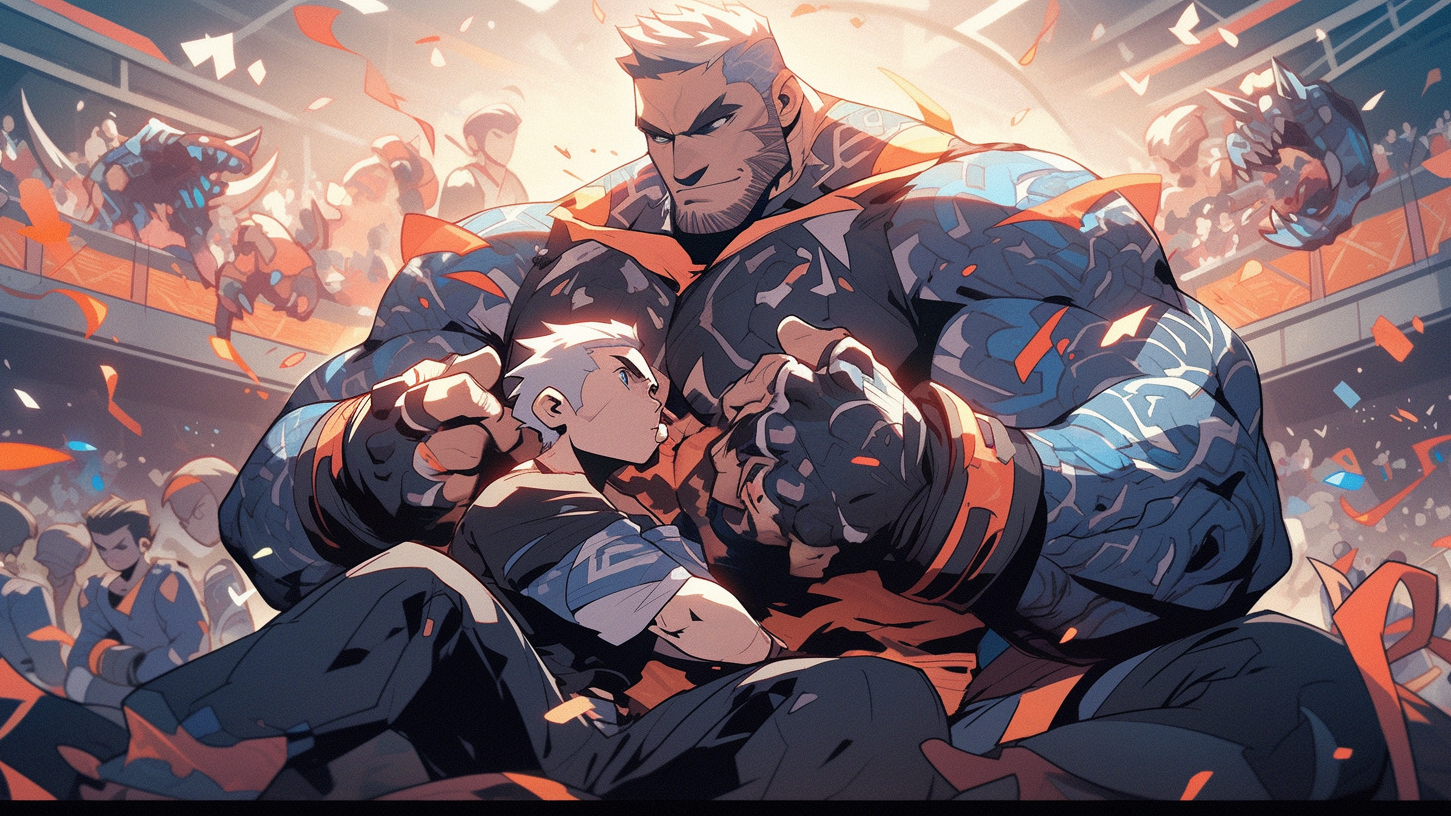
In your first month of BJJ training, there are several crucial aspects that you should be prepared for. From the orientation classes to making the decision to continue, it’s important to understand what lies ahead. Jiu Jitsu for beginners is about helping you understand these aspects. You’ll likely encounter a universally difficult start as a beginner, but don’t worry – it’s a normal part of the learning process. Throughout your journey, listening to your coaches’ advice will prove invaluable. Jiu Jitsu for beginners is something that takes awhile to develop out of. This martial art requires discipline, respect, and a mindset of survival and endurance.
The Orientation Classes and Decision to Continue
Orientation classes are essential for those beginning their BJJ journey. They provide an introduction to the Jiu Jitsu for beginners basics, helping newcomers understand what they can expect. During orientation classes, instructors explain the movements and principles of BJJ, giving beginners a strong foundation.
These classes offer an environment for beginners to acquaint themselves with BJJ positions and movements. It gives them a glimpse of what BJJ involves and helps them decide if it is something they want to pursue. Additionally, orientation classes let newcomers become familiar with the gym’s culture, instructors, and students.
Experienced coaches also provide guidance in orientation classes helping the jiu jitsu for beginners. They introduce the core principles of BJJ like leverage, control, and technique over strength. They also promote discipline and respect on the mats, and educate about proper etiquette.
Orientation classes are beneficial for all skill levels. Even seasoned practitioners can refresh their skills or transition to a new gym. These introductory sessions help people make informed decisions about BJJ training.
Jiu Jitsu for beginners Tip: Make the most of orientation classes by being interactive and absorbing as much knowledge as you can. Ask questions to clarify any doubts you have about continuing with BJJ.
Universally Difficult Start: Jiu Jitsu for beginners
The beginnings of Jiu Jitsu will be tough for everyone. To advance skills, newcomers must work through issues. Both mentally, and physically. Who you react to situations on the mat reveal a lot about how you handle situations in life.
In their first month, Jiu Jitsu for beginners learners may find new movements, techniques and positions hard to master. Coordination is a must, and it takes time. I’ve been at it 3 years and still haven’t fully gotten my body to coordinate right at times.
Mentally, YOU must understand strategies and problem-solving. Learning to act and think during rolls can be intimidating. I like to think of jiu jitsu as high live pattern recognization. Staying devoted to training is key, the more you train the more you will start to recognize the patterns. With practice, they will become more instinctual. By overcoming the first hurdles, this will build the foundation for future progress.
Importance of Listening to Coaches’ Advice
Jiu Jitsu for beginners: LISTEN to coaches’ advice, listening to them is a must in Jiu Jitsu. Coaches possess vast knowledge and experience in this martial art, making their guidance indispensable for Jiu Jitsu for beginners. They offer valuable insights on techniques, positioning, and strategy, helping students comprehend BJJ’s intricacies.
Furthermore, coaches give personalized feedback tailored to each student’s strengths and weaknesses. This helps identify areas for improvement and practice the right techniques, thus aiding progress. By paying attention and following their guidance, one can refine their skills and steer clear of bad habits or incorrect form.
Plus, coaches provide invaluable mental support and encouragement. Learning a new martial art can be quite challenging, but having a coach who understands this can make a world of difference. They motivate students to reach beyond their limits, building confidence and resilience.
Listening to coaches’ advice not only boosts technical development but also creates a positive learning environment. Trusting in their expertise and following their instructions establishes a strong relationship based on respect and mutual growth. This trust fosters an atmosphere where everyone feels safe asking questions, seeking feedback, and collaborating with fellow practitioners.
Jiu Jitsu for beginners, it is critical to approach training with an open mind and willingness to absorb information from experienced coaches. Their guidance sets the foundation for your Brazilian Jiu Jitsu journey, while ensuring safe training practices. By actively listening to coaches’ advice, one can maximize their learning potential, accelerate progress, and ultimately become a well-rounded practitioner of this martial art.
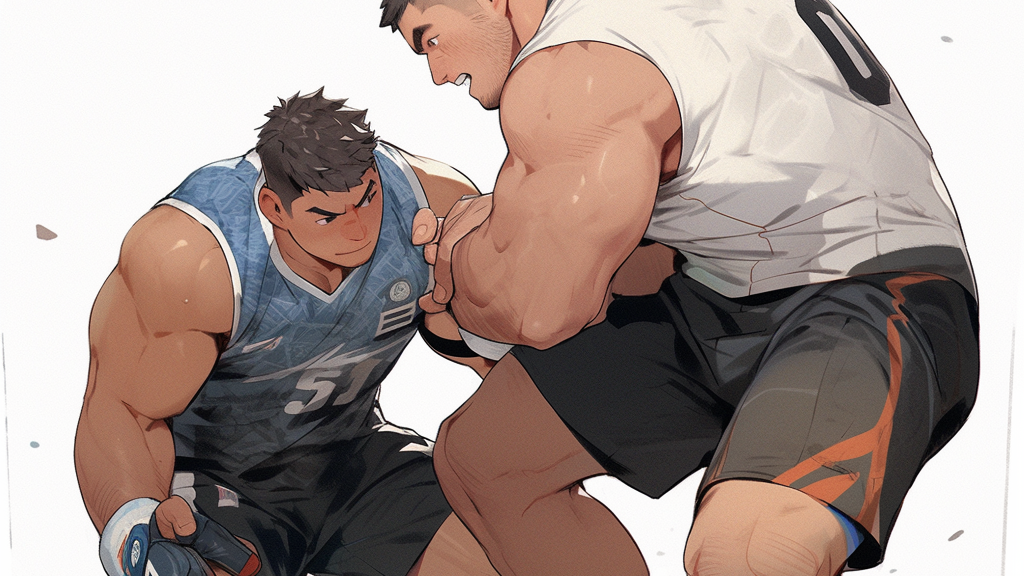
Jiu Jitsu for beginners: Understanding BJJ as a Grappling Martial Art
Brazilian Jiu Jitsu (BJJ) is a grappling martial art. It uses leverage and technique to defeat larger opponents, making it perfect for all sizes and strengths. BJJ started in Japan but has evolved into its own style with a focus on ground fighting.
Rather than striking, BJJ controls opponents with holds, joint locks, and chokes. That doesn’t mean that Jiu Jitsu doesn’t or shouldn’t evolve strikes. In fact I believe that is the one of the areas that is holding back the martial art from it’s true potential.
But Jiu Jitsu for beginners dictates we learn how to ground fight! Beginners must learn fundamental 7 positions Standing, Guard, Half Guard, Side Control, Mount, Turtle, and Back Mount. These positions are the base of all of the BJJ moves. Learn to move between them smoothly. In addition, understand balance, weight distribution, timing, and pressure. This is key for executing techniques in during rolling sessions also known as sparing.
Instructors are important for teaching these positions and proper technique. They make sure learners have a solid foundation in Jiu Jitsu and keep improving.
Discipline and Respect in BJJ Training
Jiu Jitsu for beginners: Understanding discipline and respect are essential parts of Jiu Jitsu (BJJ) and life. Practitioners must have a high level of discipline and show respect to their coaches, training partners, and the art itself.
This includes:
- Staying disciplined while practicing. This martial art requires effort, dedication and commitment in following techniques, attending classes, and improving skills.
- Respecting coaches who guide students during their journey.
- Showing respect to training partners during sparring sessions, keeping safety and wellbeing in mind.
- Adhering to a code of conduct that promotes safety, fairness, humility, honesty, and integrity.
- Following gym rules and protocols like arriving on time, personal hygiene, cleaning up, and respecting the gym space.
Discipline and respect should not only be practiced during training, but also in daily life outside of the gym. These principles create a learning environment and promote personal growth. Discipline develops self-control and mental fortitude not only in the martial art but also in other areas of life.
Respect among students creates a supportive atmosphere for learning, teamwork, and personal development. For beginners and advanced students, embracing discipline and respect in BJJ training is essential for success.

Dealing with Pain and Minor Injuries
BJJ can involve sweaty hugs and unintentional choking. So, learning to manage pain and minor injuries is essential for Jiu Jitsu for beginners success. Coaches offer tips on techniques and warm-up exercises to reduce risk, but listening to your body is key; discomfort and soreness are normal. But, if pain persists, communicate it to an instructor or medical professional. Rest and recovery are important. Prioritizing these can prevent injuries or chronic conditions. With attentiveness and care, beginners in BJJ can stay safe and make progress.
Class Structure and Components
In a BJJ class, the instructor typically starts with warm-up exercises. These can include jogging, stretching, calisthenics, and mobility drills. Afterward, the instructor shows techniques and their principles. Then, partner drilling starts. This helps students practice the techniques and ask questions. To end, students engage in live sparing sessions. Here, they use their skills in sparring situations against other students.
Throughout the class, instructors typically emphasize safety and respect, and if they don’t maybe it’s not the right gym. A good coach will make sure all of their students practice proper etiquette and conduct, and prioritize safety between partners. This kind of environment encourages learning.
By understanding BJJ class structure, beginners can progress. With consistent practice and dedication, they can develop their skills and reap the benefits of BJJ.
Survival & Endurance are Key for Jiu Jitsu for Beginners
Survival and endurance are essential for beginners starting in BJJ. To progress and improve, one must be able to survive and endure the intense physical demands of training. These skills help beginners focus during rolls, overcome challenges, and build mental resilience. Here is a 6-step guide for Jiu Jitsu for Beginners on how beginners can develop such abilities:
- Enhance cardiovascular fitness: Regular exercises such as running, cycling, and swimming can improve overall stamina for training.
- Employ proper breathing techniques: Controlled breathing helps regulate heart rate and maintain composure during intense rolls. Beginners should practice diaphragmatic breathing for optimal oxygen intake.
- Have mental fortitude: BJJ tests mental toughness as much as physical strength. Beginners should develop a resilient mindset by pushing through discomfort and embracing challenges.
- Prioritize recovery and rest: Adequate rest is needed for muscles to recover and grow stronger. Listen to the body, have enough sleep, and take active recovery methods to prevent injuries.
- Build functional strength: Exercises like weightlifting or bodyweight movements can enhance performance in BJJ. Strong muscles help execute techniques more effectively.
- Practice technique efficiency: Focusing on technique preserves energy and helps survive against stronger opponents. Beginners should strive to learn the most efficient ways of executing techniques.
Perseverance and resilience extend beyond physical training. Jiu Jitsu for Beginners dictates you should apply these principles to foster personal growth. By doing so, they will not only improve performance in BJJ but also experience positive changes in other areas of life.
One of the founders of BJJ, Helio Gracie, emphasized the value of survival and endurance. He created a martial art that allowed smaller individuals to defend themselves against larger opponents by technique over sheer strength. This necessitated the development of survival tactics and enduring relentless pressure. Today, these principles continue to be essential in jiu jitsu training, contributing to its effectiveness as a self-defense system and combat sport. As newcomers begin their BJJ journey, they inherit this rich history while striving to cultivate their own abilities in survival and endurance.
Supplementing Training with Homework and Instructional Videos
Homework and instructional videos offer a great way to boost your progress. Reinforce techniques learned in class and develop muscle memory by doing homework assignments. Study techniques at your own pace with the help of instructional videos. BJJ Fanatics is a great resource and always has deals going on.
Homework and instructional videos also provide a great way to practice when you can’t attend regular training sessions. Don’t miss out on this valuable tool for growth in BJJ.
Learning When to Tap and Communicate During Rolling
Knowing when to tap and when to speak up during rolling is like having your own personal ‘uncle’ alarm system.
It’s vital to understand when to tap out during training. Tapping signals submission and stops injuries. Listen to your partner’s taps, too. Respect boundaries for a safe environment.
Communicate via verbal or non-verbal cues. This allows understanding of each other’s limits and goals. Make adjustments if needed.
Importance of Drilling Specific Techniques for Improvement
Drilling specific techniques is essential for improving in Brazilian Jiu Jitsu. Practicing and honing these techniques repetitively allows muscle memory to form. This helps with efficiency and precision during live rolling or competitions. It also develops a deeper understanding of a technique’s mechanics and intricacies, so they can be adapted and applied effectively.
Furthermore, drilling helps beginners build a strong BJJ foundation. They can become familiar with basic moves, positions, and transitions. Consistent drilling develops coordination, body awareness, and timing, so techniques can be executed fluently.
Drilling not only improves technical proficiency, but also physical attributes like strength, flexibility, and agility. The repetitive nature is challenging, and promotes endurance and stamina. Beginners can identify areas needing improvement, and refine them.
Jiu Jitsu for beginners means to drill. To get the most from drilling sessions, focus and attention to detail is key. Listen carefully to coaches’ instructions and feedback for proper technique execution. Accuracy is important instead of speed.
Regular drilling instills muscle memory and technique familiarity. Dedicated drilling sessions at the start or end of training sessions, or drill-focused classes at the BJJ gym, all help accelerate progress. Beginners can build a strong foundation in Brazilian Jiu Jitsu with dedicated time for drills.
Basics to Learn in Your First BJJ Class
In your first BJJ class, it’s crucial to grasp the basics. Get a head start with online research, uncovering valuable tips to enhance your preparation. Familiarizing yourself with fundamental positions will give you a solid foundation to build upon. By diving into these sub-sections, you’ll be well-prepared to make the most of your initial jiu-jitsu experience. So let’s get started on your journey to mastering the basics!
Fundamental Positions to Familiarize Yourself With
When starting your BJJ journey, it’s essential to understand the fundamental positions. These provide the backbone of this martial art and are the starting point for many techniques. You can gain control of your opponent on the ground by mastering these positions. This develops a strong foundation for your Brazilian Jiu Jitsu journey.
The Open Guard position has you on your back with legs open, using grips and hooks to control distance. It gives you various strategies and techniques. The Closed Guard involves wrapping your legs around the opponent’s waist or hips, creating a closed position. It also offers submissions and sweeps.
The Butterfly Guard requires you to sit up with both feet inside your opponent’s thighs. It enables effective sweeping and attacking options. Side Control puts the top practitioner in chest-to-chest control of the opponent. This immobilizes them and sets up submissions or transitions.
The Mount position is when you sit atop an opponent who is flat on their back. Here, you get complete control and numerous attacking options. Knowing these fundamental positions is key for beginners to move through situations during sparring or competitions.
Additionally, other fundamental positions exist that beginners should be aware of. These include the Back Mount and its variations, such as the seatbelt grip and body triangle. Each presents unique challenges and opportunities for offensive and defensive techniques. By practicing and understanding these positions, beginners can expand their techniques and become well-rounded in Jiu Jitsu.
Open Guard
The Open Guard in Brazilian Jiu Jitsu involves controlling the distance and movement of an opponent, using the legs to form a barrier and keep the hips open. It is an essential position, allowing for defensive and offensive techniques.
Beginners must learn the concept of the Open Guard to defend and attack. It offers sweeps, submissions, and transitions to other positions.
Hip movement and balance are essential to successful Open Guard play. Common techniques include scissor sweeps, arm drags, omoplatas, and triangle chokes.
Advanced players may explore variations such as Spider Guard and De La Riva Guard. Grip management and using feet effectively must also be understood. By mastering these aspects, practitioners can build a game suitable for opponents of all sizes and skill levels.
Closed Guard
The closed guard is an integral part of Brazilian Jiu Jitsu (BJJ). It requires the bottom practitioner to wrap their legs around the top practitioner’s waist, immobilizing them and giving control. From this position, the bottom practitioner can attack, sweep, or delay.
Maintaining control over your opponent when you have them inside of your closed guard involves several key principles:
- Use Your Legs and Hips: Your legs and hips are your primary tools for controlling your opponent in the closed guard. By locking your legs around your opponent’s waist and keeping your hips active, you can control their movement and prevent them from easily passing your guard.
- Control the Posture: Controlling your opponent’s posture is crucial. You can do this by pulling them down towards you using your legs and arms. If your opponent is postured up, it’s easier for them to pass your guard or launch attacks. By breaking their posture, you limit their options and set yourself up for attacks.
- Grip Fighting: Grips are crucial in BJJ. You should always be fighting for dominant grips. This could mean grabbing your opponent’s sleeves, collar, or wrist. Good grips allow you to control your opponent’s movements and set up attacks.
- Stay Active: An active guard is a dangerous guard. Constantly look for opportunities to attack or sweep. The more threats you pose to your opponent, the more they will have to react to you, which gives you control over the engagement.
- Create Angles: Don’t just stay flat on your back. Use your hips to create angles. This can open up opportunities for attacks and make it harder for your opponent to pass your guard.
Remember, maintaining control from the closed guard is not about strength; it’s about using technique and leverage. Always practice these techniques under the supervision of a qualified instructor to ensure safety and effectiveness.
Mastering the closed guard requires proper positioning and understanding leverage. Utilizing hip movement and gripping your opponent’s collar or sleeves give you control. The closed guard offers both offensive and defensive opportunities, and is a foundation for further BJJ techniques.
Jiu Jitsu for Beginners Pro Tip: To excel in the closed guard, focus on breaking down your opponent’s posture by pulling them forward with your legs while maintaining a grip on their gi. This will make it tough for them to escape or attack.
Butterfly Guard
The Butterfly Guard is a must-know position in BJJ. It involves sitting on the ground, with both legs hooked inside the opponent’s thighs. This creates a strong base for dynamic movement and offensive opportunities.
In BJJ, the Butterfly Guard is used to control opponent’s posture and stops them from passing. It’s great when facing larger opponents, since it allows for quick transitions and sweeps. The practitioner uses their legs to disrupt their opponent’s balance, while controlling their upper body.
Using the Butterfly Guard requires understanding of distance and angles. Keeping close to the opponent and angling correctly neutralizes their attacks and sets up various sweeps or submissions. It also provides access to other positions such as the X-guard or Single-leg X-guard.
Unlike the Closed Guard, the Butterfly Guard is more open and offensive. It allows for fast transitions between attacks, making it very versatile.
Side Control
Side Control in Brazilian Jiu Jitsu (BJJ) is essential. It limits opponent’s movement and provides chances for transition and submissions. Common techniques include knee-on-belly, north-south, kimuras, and americana locks.
Pressure is key to secure control. Applying pressure keeps your opponent flat and gives you an advantage. It’s also important to know how to transition from this position.
To be successful in Side Control, stay heavy and use hips and body to prevent opponents from escaping. Learn the potential submissions, such as chokes and armlocks.
Learning Side Control is a challenge. Take it up and make it part of your training regimen. It’s one of the most vital aspects of BJJ. Don’t miss your chance to master it!
Mount
Let’s dig into the mount position! Here’s a table that shows its main aspects:
| Aspect | Description |
|---|---|
| Position | Top player sits on opponent’s chest or belly. Knees press down for pressure. |
| Control | Top player uses arms to limit opponent’s mobility and stop escape attempts. |
| Attacks | From mount position, top player can punch, choke, armlock, or transition to other dominant positions. |
| Escapes | Bottom player must bridge or create space to exit mount or get defensive. |
| Defense | Top player should anticipate sweeps or reversals & maintain balance to avoid being swept. |
Mount position gives an advantageous view. You can see your opponent’s moves & reactions. This helps you adjust your strategy.
Mastering the mount needs both technical expertise & understanding. You need to know when to shift between attacks, keep balance and base, and predict your opponent’s moves. Developing a skill set that includes offensive techniques & effective defense is essential for BJJ.
Practice and drill the mount regularly to become comfortable with using it to launch attacks or maintain control.
Back Mount
The Back Mount in Jiu Jitsu (BJJ) is a powerful, advantageous and dominant position. It involves the practitioner getting in control of their opponent’s back, with their legs wrapped around the opponent’s waist. From this position, multiple options for submission attacks and control are available.
- This mount enables the practitioner to pressurize their opponent fully.
- It offers options to attack with chokes, such as the Rear Naked Choke or Bow and Arrow Choke.
- Additionally, Armbar and Collar Choke techniques can be used.
- Having control of the back allows them to score points in BJJ competitions.
- To make the most of the Back Mount, practitioners must have strong fundamentals and stop their opponent from escaping.
It is also essential to keep the hooks and grips in the proper place when launching attacks. Leverage knowledge and proper technique are fundamental for achieving success. By enhancing the fundamentals of the Back Mount, practitioners can control their opponents and make possibilities for submission finishes.
Keep in mind that perfecting the Back Mount has its own time and practice. Consistent exercising and awareness of details will help polish the skills in this advantageous position. While improving the technique, make sure to maintain a well-rounded game across all aspects of BJJ training.
For novices, mastering the basics is the key to unlocking the intricate realms of Brazilian Jiu Jitsu.
Easiest Techniques for BJJ Beginners to Master
Importance of Starting with Easy Techniques and Gradually Progressing
Starting slow is key for beginners in Brazilian Jiu Jitsu (BJJ). This lets them create a strong basis and develop essential skills. Mastering basics like proper body positioning and weight distribution is vital for success.
It is important to understand why starting with easy techniques is essential. Learners can gain confidence and create a solid foundation. There’s also less risk of injury and learners can learn about leverage, timing, and strategic thinking.
Starting with simple moves encourages patience and discipline. Progress in BJJ isn’t always linear and requires effort over time. Beginners learn that with dedication, they can achieve success.
Efficient and Step-by-Step Learning of Techniques
To learn Brazilian Jiu Jitsu (BJJ) techniques effectively, a step-by-step approach is essential. It helps to establish a strong base and progress gradually. Here are the key steps to follow:
- Get the basics right: Basics like open guard, closed guard, butterfly guard, side control, mount, and back mount should be mastered first. Then, more advanced moves can be attempted.
- Start with easy techniques: Armbars, guard passing, triangle sit-ups, submission techniques, sweeps, mount escape techniques, and guard replacement are recommended for beginners.
- Commit time for practice and instruction: Practicing techniques consistently and seeking guidance from experienced instructors are both important.
- Learn step-by-step: Breaking down techniques into smaller parts makes them more manageable. Master each step before moving on to the next one.
- Train with partners: It is beneficial to work with partners to practice the techniques in a realistic setting. Timing, coordination, and sensitivity to the opponent’s movements can be developed.
- Seek feedback and adjustments: Feedback from instructors and training partners is necessary to identify areas for improvement and make necessary adjustments.
Consistent practice and dedication to mastering the basics are key for efficient learning of BJJ techniques.
Popular Techniques for Beginners
Beginning Brazilian Jiu Jitsu? Start with these popular techniques!
- The armbar
- Closed Guard & Guard passing (be sure to study how to open to guard first. You can’t pass if you can’t open)
- Submission techniques
These techniques are perfect for building a solid foundation. With dedication and guidance, you’ll soon refine your execution and expand your skillset. Don’t miss out – start your training and unlock your potential! Oh, and don’t worry – the armbar isn’t as bad as it looks – unless you’re on the receiving end.
Armbar
The armbar is a must-know move in Brazilian Jiu-Jitsu (BJJ). It involves securing an opponent’s arm between your legs. Once the arm is locked, you can apply pressure to the elbow joint. With gradual leverage, the opponent will tap out or risk injury.
The armbar can be used in various positions, such as the guard, mount, or side control. It is effective in immobilizing and subduing opponents.
The armbar isn’t only great for submissions. It also serves as a foundation for more advanced moves. By mastering the armbar, BJJ practitioners can improve their grappling skills and understand leverage and body mechanics better. Every BJJ practitioner should learn and practice it diligently.
Guard Passing
Efficient footwork and body movement are musts for Guard Passing success. Balance, timing, and patience are the keys to executing Guard Passing techs. Common Guard Passes include Bullfighter, Knee Cut, and Leg Drag. Plus, pressure and hip control help.
Knowledge of Open and Closed Guard variations is needed too. Repetition of drills is good for honing techniques and timing.
Adapt strategies based on opponent’s skill level, size, and agility. Study different Guard Passes and refine techs. Newbies should build a strong foundation to boost overall BJJ growth.
And don’t forget Triangle Sit-ups. Fitness and tangling up in BJJ – the best way to get abs with grappling advantage.
Submission Techniques
Four classic submission techniques in BJJ are the Armbar, Rear-Naked Choke, Triangle Choke, and Kimura Lock.
The Armbar requires hyperextending the opponent’s elbow joint with proper leverage and angle.
The Rear-Naked Choke involves cutting off blood circulation and air intake with a tight grip around the neck.
The Triangle Choke applies pressure to both sides of the carotid arteries, leading to unconsciousness if not released.
The Kimura Lock manipulates and controls the shoulder joint to cause pain or force submission.
These techniques must be mastered through practice, repetition, and refinement.
Advantages include self-defense, mental focus, discipline, and physical fitness. Additionally, problem-solving skills are improved. Strength and cardiovascular endurance are also developed.
Sweeps
Sweeps involve a mix of leg and hip movements with grabbing and controlling your opponent’s limbs or gi. These techniques can disrupt their balance and force them onto their back or side, so you can gain the dominant position.
There are scissor sweeps, flower sweeps, tripod sweeps, and hip bump sweeps. All of them share the goal of reversing the position.
Timing and precision are key to executing sweeps effectively. You must anticipate and exploit weaknesses to complete a sweep. Sweeps can be done with the gi or without. Practice them in guard, half-guard, or butterfly guard for a well-rounded skillset.
Beginners need to practice and refine sweeps. Learn the mechanics and drill them. Watch instructional videos and get guidance from experienced instructors to enhance your sweeping abilities.
Pro Tip: Focus on creating angles instead of relying on strength. Use proper technique and leverage to make sweeping more efficient and reduce exertion.
Mount Escape Techniques
Bridge and Roll Technique: Lift your hips off the ground and trap one of your opponent’s arms. This creates momentum and rolls them over, enabling a successful escape.
Shrimp Escape Technique: Move your hips away while keeping control of your opponent’s arm. This creates distance and allows you to escape from the mount position.
Elbow Escape Technique: Turn onto one side and make space with your elbow. Doing so will help you to escape from under the mount.
Want to learn mount escapes? It is recommended to get guidance from experienced instructors at BJJ gyms. These experts can provide helpful explanations and demonstrations. This will help you refine your technique and become a better BJJ practitioner.
Elevate your BJJ journey by mastering mount escapes! You will gain essential defensive capabilities and further progress your skill set. Don’t miss out on this opportunity to become a well-rounded BJJ practitioner!
Guard Replacement
Guard Replacement is a must-learn skill for BJJ beginners. It gives them control over the fight and stops their opponents from taking dominant positions.
To use it well, one needs strategic timing and precise movements. It defends, creates openings for offense and neutralizes opponents’ advances.
Benefits of Brazilian Jiu Jitsu for Beginners
Embark on your Jiu Jitsu for beginners journey and discover the countless benefits it holds for beginners. From shedding those extra pounds to gaining impeccable self-confidence and problem-solving skills, this martial art offers a holistic transformation. Not only will you witness physical fitness and weight loss, but you’ll also develop discipline and embrace essential values throughout your BJJ practice. Get ready to experience the power of Brazilian Jiu Jitsu and unlock your true potential on and off the mats.
Weight Loss and Physical Fitness
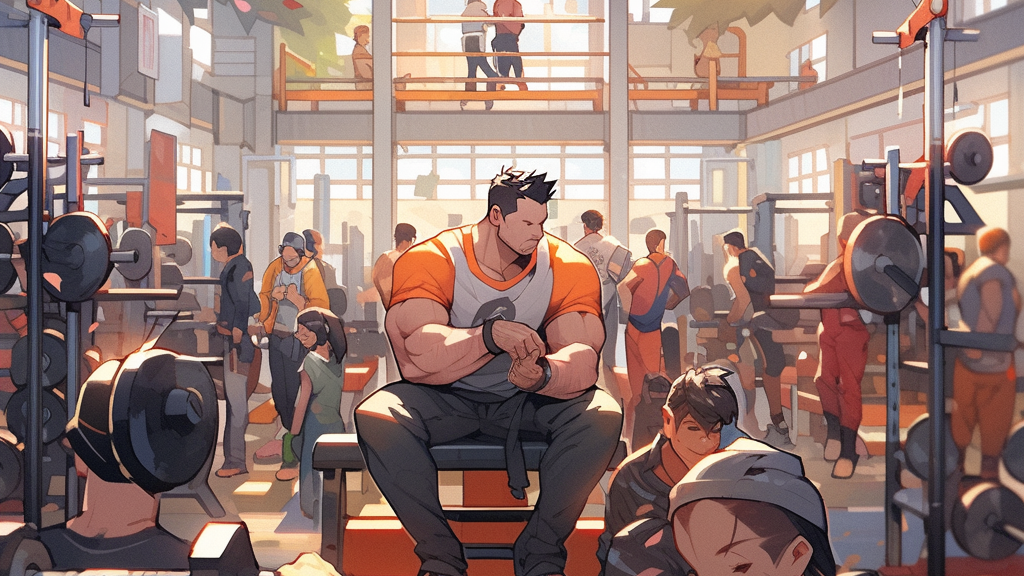
Weight Loss and Physical Fitness? Look no further than Jiu Jitsu! Through intense training and physical activity, you can master various movements, techniques, and positions. Plus, you’ll gain strength, flexibility, and endurance. Not to mention, acquire self-defense skills. BJJ will also empower you with the confidence and problem-solving abilities needed in any situation. So, if you want to lose weight and improve your physical fitness, don’t miss out on this ideal choice!
Improved Confidence and Problem-Solving Skills
Enhancing confidence and problem-solving is a key part of Brazilian Jiu Jitsu (BJJ). This martial art helps people gain assurance and skills – in and out of the mat.
BJJ teaches practitioners to have faith in their techniques and abilities. This boosts their physical confidence.
Learning and doing BJJ moves calls for critical thinking and problem-solving. Practitioners must adapt to challenges on the mat and come up with creative solutions.
BJJ demands discipline and focus. This helps individuals take a systematic approach to problem-solving.
As BJJ practitioners progress, they feel more secure in dealing with real-life confrontations or tough situations.
It’s worth noting that BJJ-acquired confidence and problem-solving skills can benefit different aspects of life, such as work, relationships, and everyday issues.
Discipline and Values in BJJ
Discipline and values are essential parts of Jiu Jitsu for Beginners. It focuses on teaching self-control, perseverance and respect for instructors, fellow students and the art. BJJ also instils values such as patience, humility and mental fortitude that can be used inside and outside of class.
To develop discipline, BJJ requires regular practice and commitment. Training sessions are demanding, challenging both the body and techniques.
Values are at the core of BJJ culture. Respect for coaches and higher-ranked individuals is expected, as is support for fellow students. Humility is promoted through the understanding that there is always room to improve. This encourages an open mind and gracious acceptance of defeat.
In conclusion, discipline and values are key components of BJJ. The sport helps build physical and mental strength. These qualities shape practitioners into well-rounded people who not only excel in the sport but also carry these values into everyday life.
Pro Tip: Set goals for yourself and take time to appreciate your progress, however small. Each step forward is something to celebrate!
FAQs About Jiu Jitsu For Beginners:
Can Beginners In Brazilian Jiu Jitsu Learn The Techniques By Themselves Without Formal Training?
It is not recommended for beginners to try learning Jiu Jitsu techniques by themselves without formal training. The guidance of a qualified instructor is essential to ensure proper technique, prevent injuries, and understand the principles behind the techniques.
How Can I Find A Brazilian Jiu Jitsu Gym Near Me?
To find a Brazilian Jiu Jitsu gym near you, you can use search engines like Google Maps or Apple Maps and search for “BJJ near me.” Make sure to check for gyms with up-to-date websites and social media profiles, convenient locations, and schedules that suit your availability.
What Are Some Of The Easiest Techniques In Jiu Jitsu That Beginners Should Focus On?
Some of the easiest techniques for beginners in Jiu Jitsu include guard replacement with hip escape, scissor sweep, triangle choke from guard, mount escape techniques, and straight armlock from mount. These techniques provide a strong foundation and are widely used in Jiu Jitsu training.
What Is The Cost Of Brazilian Jiu Jitsu Classes?
From my experience you can expect to pay $150 – $200 a month, so about $22,000 a year. The cost classes can vary depending on factors such as the location and type of sessions offered (Gi or No Gi). It is advisable to contact the gym directly or visit their website for specific pricing information.
How Long Does It Take To Progress From A Beginner To A Blue Belt Level In Brazilian Jiu Jitsu?
The time it takes to progress from a white belt to a blue belt can vary greatly depending on factors such as frequency of training, individual dedication, natural aptitude, and the specific requirements set by the gym or organization. On average, it may take approximately 1-2 years of consistent training to achieve the blue belt level. Some have been know to do it in less than a year.
What Are The Mandatory Pieces Of Equipment Needed For Brazilian Jiu Jitsu Training?
The mandatory pieces of equipment for Brazilian Jiu Jitsu training include a well-fitted Gi (uniform), a belt that corresponds to your rank, mouth-guards, and groin protectors (for males). Some gyms may also require the use of specific rash guards or spats during No Gi training sessions. It is advisable to check with your gym for their specific equipment requirements.
Conclusion
Jiu jitsu for beginners offers an in-depth introduction to the martial art. It is a great starting point for anyone new to jiu jitsu and wanting to experience its physical and mental advantages. Beginners can gain self-defense skills, better fitness, and a sense of discipline and confidence by learning the fundamentals of jiu jitsu.
This article provides detailed instructions on various techniques like throws, joint locks, and submissions. It focuses on the importance of proper body mechanics and leverage, helping beginners take on opponents who are bigger or stronger. It also dives into the mindset needed for jiu jitsu, stressing the need for focus, patience, and resilience.
Jiu jitsu for beginners covers the basics, but also points to the possibilities for development within the martial art. As beginners become proficient, they can explore advanced techniques and strategies. The data encourages beginners to continue their journey and ask experienced practitioners or coaches for more mentorship and a better understanding of their jiu jitsu skills.
In short, jiu jitsu for beginners is a great resource for those starting out. It offers a comprehensive introduction to the techniques, principles, and mindset of jiu jitsu. By taking advantage of it and seeking further guidance, beginners can embark on an exciting and fulfilling journey in jiu jitsu.
Some Facts About Jiu Jitsu for Beginners:
- ✅ The first month of training in Brazilian Jiu Jitsu (BJJ) is universally difficult for everyone. (Source: bjj-world.com)
- ✅ Beginners often fail to listen to important advice during live rolling, leading to mistakes. (Source: bjj-world.com)
- ✅ Beginners in BJJ should expect pain and be prepared for small injuries. (Source: bjj-world.com)
- ✅ BJJ beginners should tap when they feel discomfort or are unsure about a situation during rolling. (Source: bjj-world.com)
- ✅ Drilling specific movements and techniques is crucial for beginners to improve in BJJ. (Source: bjj-world.com)

